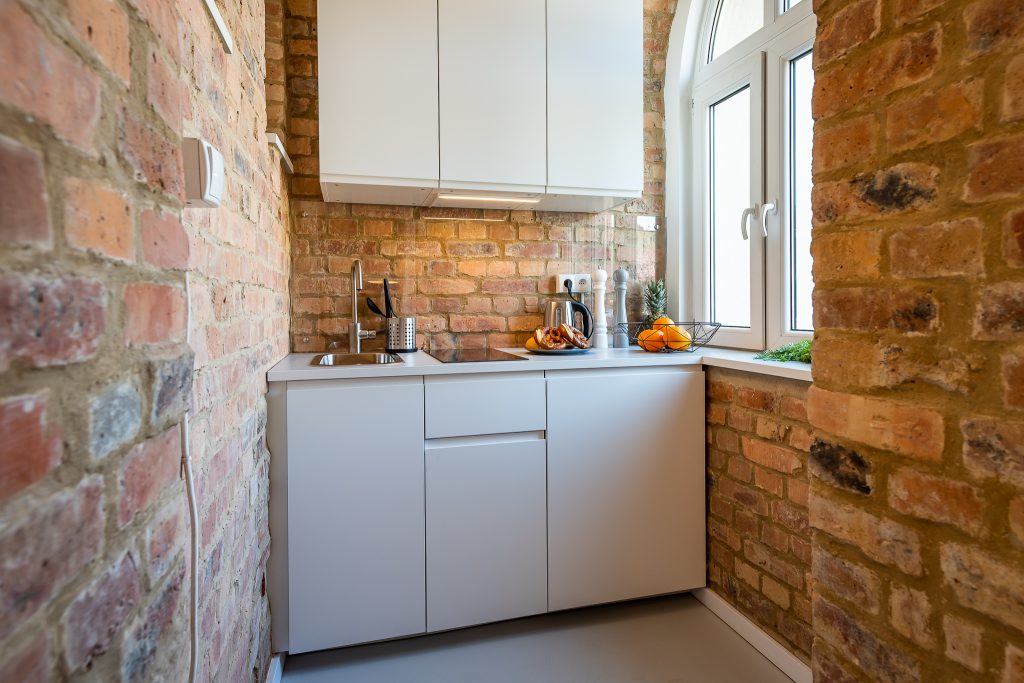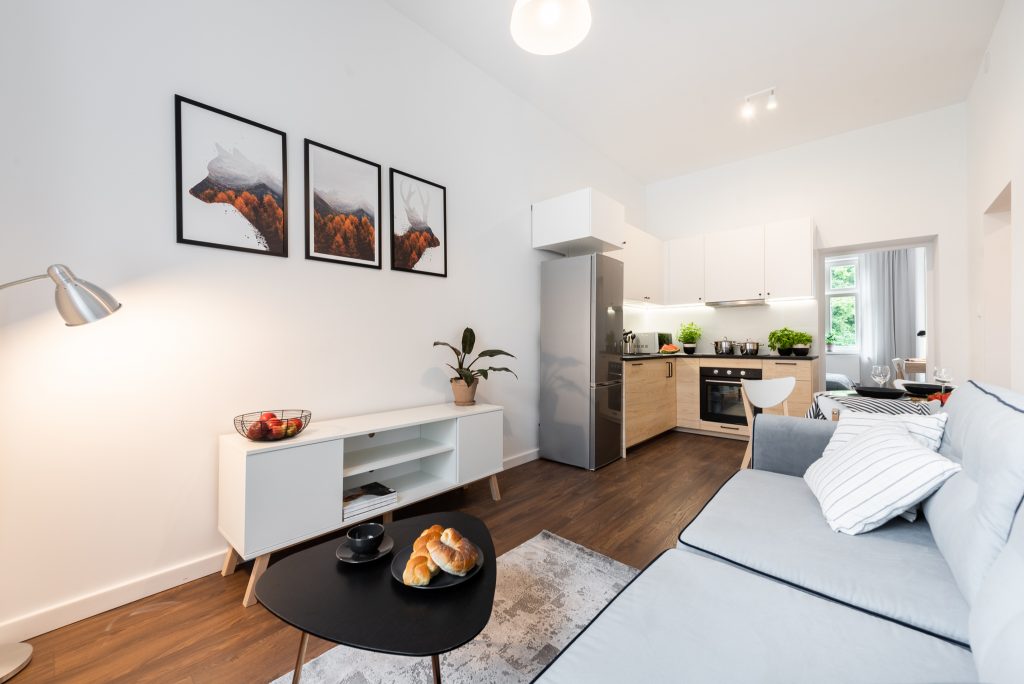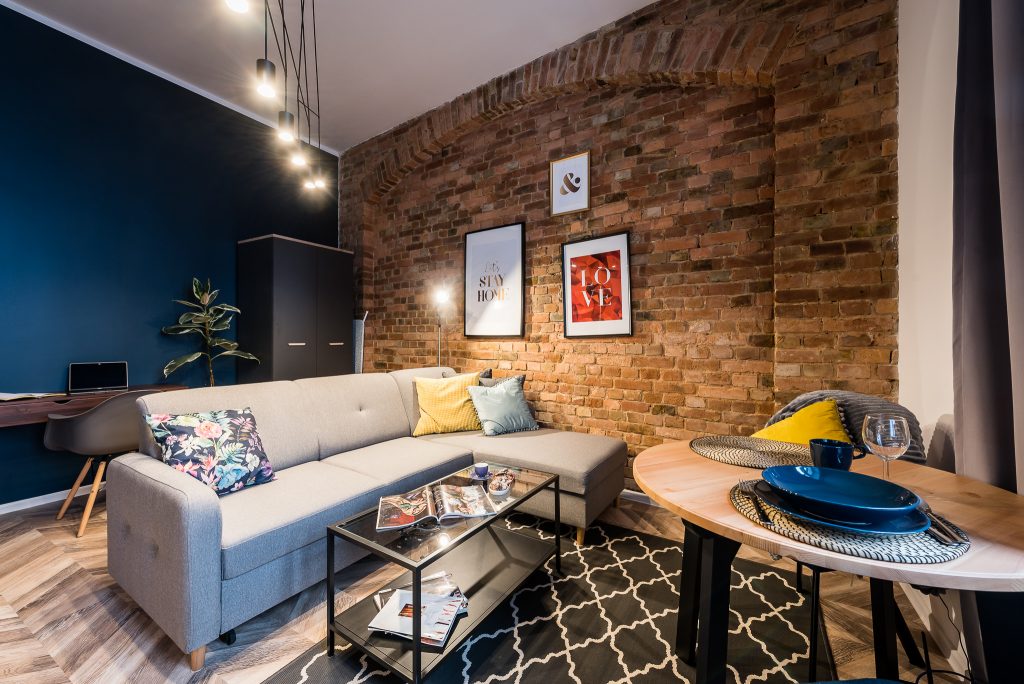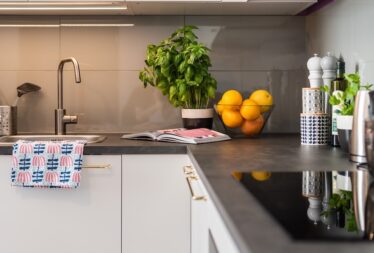Interiors in Style – Minimalism, Scandinavian, and Industrial Style
There are interiors in which we feel more like ourselves. They are cozy, tailored to our personalities, expectations, and interests, where everything is well coordinated and forms one coherent concept. Some of us need space, modern forms, and bold means of expression; others seek a warm, idyllic atmosphere, and coziness. Just like in music or fashion, an apartment can have its own individual style defining its character and inhabitants. You don’t know which style will be perfect for you? Welcome to a guide on this topic! Let’s start with options perfect for the enthusiasts of simplicity and harmony.
Nowadays we are flooded with interior design inspirations daily. We collect them while travelling, copy from our friends, see them in interesting brasseries or our favorite TV series, often being unaware that we can be advocates of a particular style. If we want to create an interior maintained in a similar atmosphere, we must ensure cohesion and creativity, and remain patient whilst looking for furniture or accessories corresponding to a particular style. Nonetheless, as early as during the planning stage, it is good to think through the whole concept and stick to the general principles defining the chosen trend. Of course, this is not about 1 to 1 copying, but about a creative variation on a given topic. After all, the apartment is supposed to reflect our own inner self and have a unique character.
Today, we present three styles that will be particularly appreciated by fans of simplicity, functional design, and soft colors.
Minimalism
Less is more. This one sentence will suffice to describe this interior design style. Minimalism is not about creating empty, soulless spaces, but about achieving harmony and perfection. There is no room for coincidence and gaudy accessories. Here everything is well thought out and designed for silence and simplicity. This style is defined by a palette of subdued colors (usually whites, beiges, browns, grays, and blacks – although in some designs they are contrasted with something more expressive e.g. red or orange).

Furniture, which is reduced to a minimum, has simple geometric shapes, large flat surfaces, and hidden handles. The prevailing materials used for finishing are: concrete, glass, metal, and sometimes wood. As for the accessories and decorations, they are significantly limited and always well thought out so they will harmonize with the remaining elements. The functionality of objects, their elegant style, and high quality are important. In a minimalist design, everything that is not used at a given moment is invisible. There is no chance for cosmetics being placed around the bathtub or coffee cups put on the kitchen counter.

Who should choose this style?
Despite being simple this style is not the easiest one. It will suit organized and disciplined people who always put things back in the right place and strive for perfection. The ‘ideological’ basis of this style is also crucial. It is not only about a nice design, but also about getting rid of unnecessary items from your life. Certainly, it is not a style for people who expect a cozy, idyllic character, and enjoy surrounding themselves with a myriad of knickknacks.
How can it be achieved?
- Opt for modern design with subdued colors.
- Keep furniture to a minimum – preferably with a ‘push-to-open’ system without handles.
- Install good lighting and create a feeling of spaciousness.
- Think in a way that will allow you to hide things that you are not using at a given moment.
- Add some rhythm and harmony to your interior.
Where can you find inspiration?
The minimalist style is in the spotlight these days. In the Silesia region many structures are now being built, referring to this trend both with their architectural and interior design. In Katowice, minimalistic inspiration can be found in some rooms of the Silesian Museum and in the spaces of the International Congress Center. We also recommend popping in for breakfast to Local Bakery – to search for minimalist inspiration in its dining area.
Scandinavian Style
Since minimalism was derived from the philosophy of Zen, there’s no place for cozy blankets, pillows, and fabrics. However, in the Scandinavian style that combines functionality with coziness, such additions are a must. Inspired by the Danish hygge philosophy (comfort, convenience, internal security, and balance) and Swedish lagom (simply translated as: ‘just right’) the Scandinavian school combines minimalism with a home-made style and natural fabrics. There is also plenty of room for wood, leather, cotton, linen, and wool. The prevailing colors are whites, grays, and beiges, sometimes contrasted with e.g. blue. Gold is becoming more and more popular, adding a touch of elegance and originality.

Designer furniture (of which Scandinavians are famous for) is made of wood and natural elements, giving it an elegant, but cozy character. It must be comfortable and designed for relaxing. Significant elements here are various accessories that break the white and complement the whole – wicker baskets, vases, lamps, armchairs, poufs, scented candles, and flowers. It’s about aesthetics and functionality, but in its family and more friendly version.

Clean, clear, cozy – typical distinguishing features of the Scandinavian style.
Who should choose this style?
If you like bright, spatial interiors with modern design, geared to be functional and at the same time avoid the harsh character and appreciate the homey, cozy atmosphere, you will definitely like the Scandinavian style. Such interiors combine the best in minimalism and nature with a truly homey atmosphere.
How can it be achieved?
- Choose white as the base color.
- Remember about the functional aspect of the interior – everything must serve a specific purpose.
- Use natural materials and do not forget about wood.
- Break the monotony with eclectic accessories and designer furniture with a Scandinavian ‘pedigree’.
Where can you find inspiration?
Well known Scandinavian furniture chains are a great reference point to seek inspiration in this topic. Even if we want to choose slightly higher quality furniture, the very assumptions of this style and the way the accessories and materials are combined can be found there.
Industrial Style
Factories, warehouses, and former industrial sites – as the name suggests, the industrial style is exactly what has been taken from such places and converted into residential space. This is where this style derived its main distinguishing features from. What if we are fond of lofts and post-industrial interiors, but live in an apartment house? After all, the interiors of this type are characterized by high ceilings, huge windows, and austerity, which is difficult to achieve in a small building. Are you sure? Well, not really. Elements of this style can be successfully transferred to apartments, giving them a fashionable style of lofts and creating an extraordinary space.

Brick and raw accessories are some of the hallmarks of the Industrial style.
The dominant colors are whites and all shades of gray and colors reminiscent of steel, tin, and copper. Other important elements are exposed brick walls, metal finishing, and heating pipes, as well as wires and sockets located on the surface. The basis of this type of interior is also minimalism and lack of excess. As in the two previous styles, things have their functional character. When choosing accessories, however, it is worth taking care of their industrial dimension – a small safe for documents, a chest with metal fittings for clothes or a lamp straight from a factory will add some feisty taste.

Black, dark accessories, and geometric lamps give the interior a slightly industrial character.
Who should choose this style?
Interiors of this type are bold and raw at the same time. Brick’s character gives them warmth and makes them emanate with unusual energy. This type of design will certainly be appreciated by creative people looking for fresh arrangements and industrial materials such as steel, glass, and concrete.
How can it be achieved?
- Do you live in a building made of large concrete blocks? Think about stuff imitating this material or a good quality wallpaper to decorate one of the walls.
- Instead of traditional wood flooring, install tiles imitating stone.
- Use concrete and glass – including large mirrors.
- Look for Steampunk-Style accessories.
- Opt for furniture and lamps with metal elements and fittings or shelves entirely made of metal, which are reminiscent of a factory.
- If possible, expose pipes and cables outside the plaster or choose pewter or copper covers.
Where can you find inspiration?
Katowice, as well as the entire area of Upper Silesia, is an excellent area for industrial enthusiasts. Bolko Loft in Bytom – a work of a well-known architect Przemo Łukasik, is the best-known example of this type. In Katowice, it is worth checking the inspiration for Szyb Wilson or the Porcelain Factory. In nearby Gliwice, however, similar flavors can be found in the renovated buildings of the former KWK Gliwice (the so-called Nowe Gliwice) or in the Wine Bar Lofty restaurant.
For more interior design inspiration, we invite you to read our next article where we will present styles focused on creative combinations, bold colors, and extraordinary accessories.



